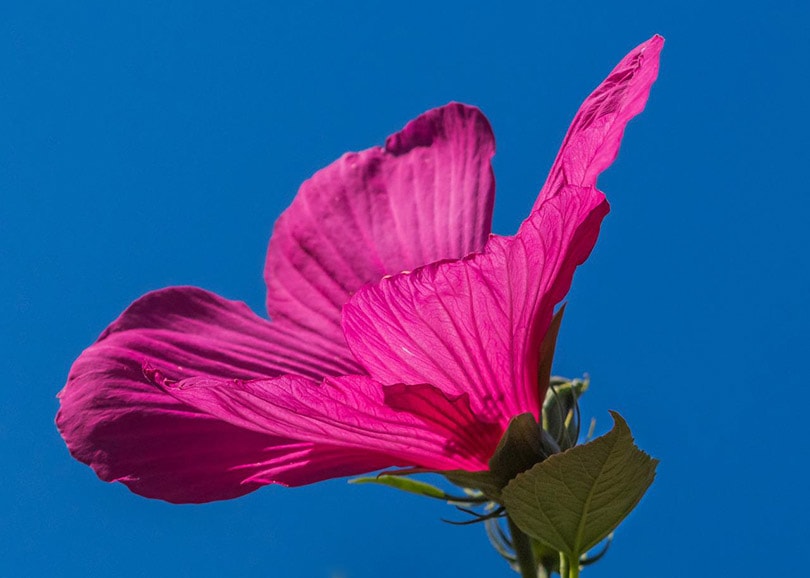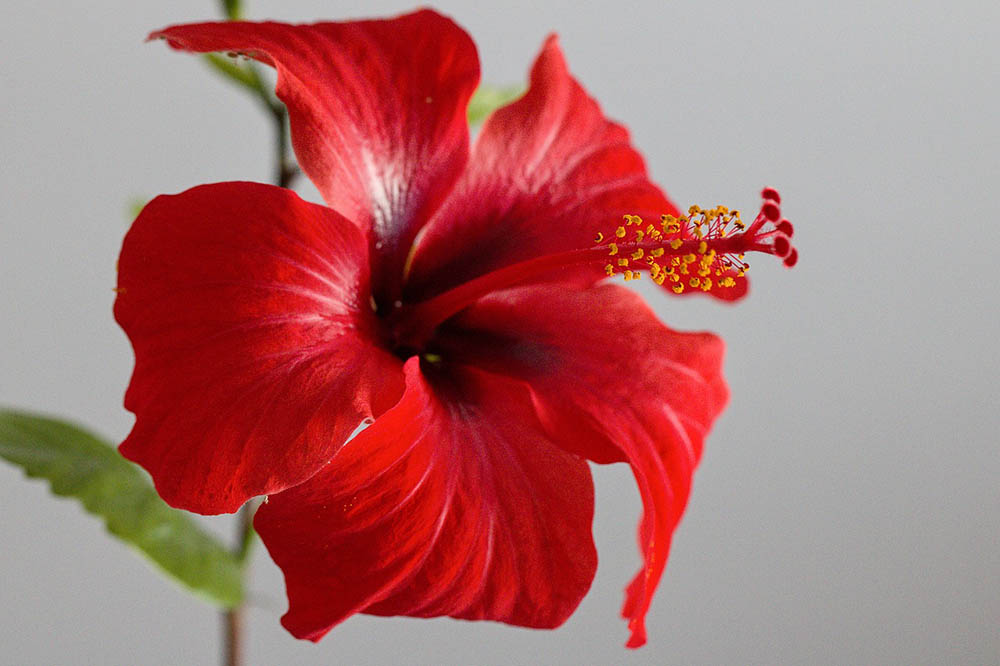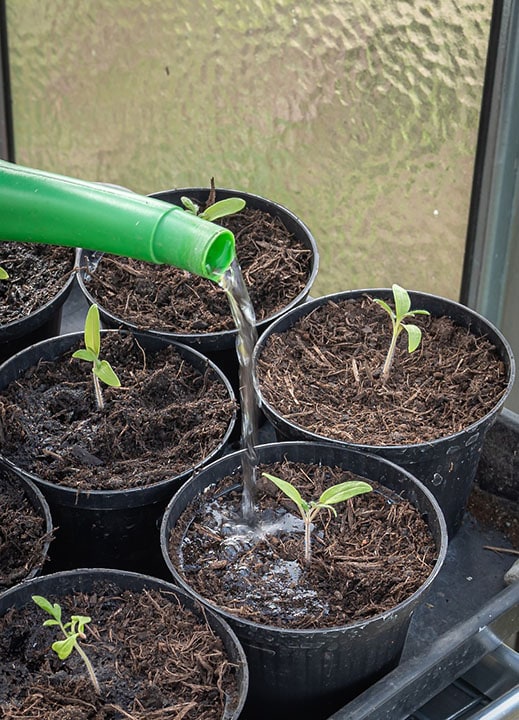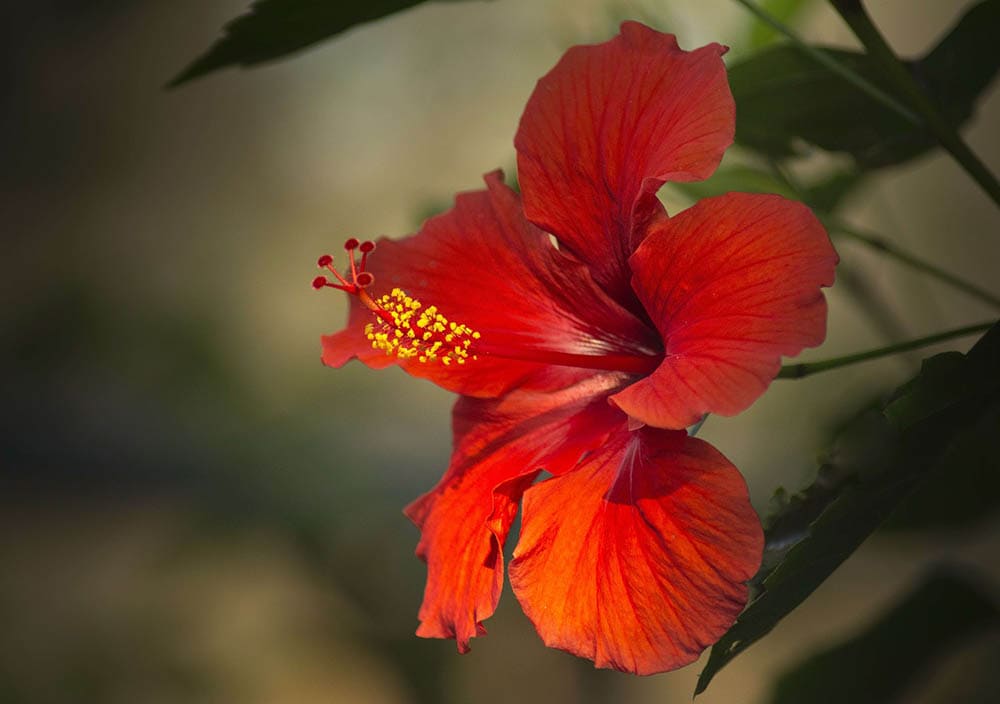Can Hibiscus Grow Indoors? Tips, Tricks & How to Guide
-
Pete Ortiz
- Last updated:

The possibility of hibiscus growing indoors is a common question among plant lovers. The answer is yes! In the right environment, you can grow hibiscus in your home indoors. But it is easier to grow some types of hibiscus indoors than others.
Generally, hibiscus need proper care and consideration. These plants thrive in tropical or warmer southern climates. However, many hibiscus tree and bush varieties have adapted to cooler temperatures.
This article gives an insight into planting hibiscus indoors. Keep reading.
Varieties of Hibiscus
Hibiscus offers medicinal properties such as regulating blood pressure, improving immunity, treating high cholesterol, and helping cure liver disease. Given these benefits, it is now clear why anyone would want the plant near the house and preferably indoors.
There are two main types of hibiscuses: the tropical hibiscus and hardy hibiscus. These two categories can further be classified into subcategories where the individual plants will fall.

Tropical Hibiscus
Tropical Hibiscus will grow well indoors when given proper care and attention. This majorly has to do with the temperature and humidity.
Tropical hibiscus need warm temperatures and lots of light, preferably a minimum of 10-12 hours a day. If you cannot access natural light, especially during winter, you should grow artificial light to supplement natural light.
These hibiscus do not die off during winter, so ensure you keep them thriving and fertilized.
Hardy Hibiscus
Do your research well before you choose any variety to grow indoors. Some varieties of hardy hibiscus, like a rose of Sharon bush may not be ideal for growing indoors. The space would be too limited for their growth. However, there are minor varieties that are better suited for indoors growth.
Some store-bought hardy hibiscus may be treated to hinder growth, but as the treatment wears out, you will find yourself with more plants than you had expected. They require light to bloom, and for the number of flowers you will see from the plant.

How to Care For Hibiscus Grown Indoors
Hibiscus is a beautiful plant with unique colorful flowers that make a fantastic addition to your garden and interior décor. This plant has culinary and medicinal uses that make it valuable.
However, Hibiscus is not the easiest plant to grow indoors, but with proper care, it can bloom. You will need the following to grow hibiscus indoors successfully:
1. Light
Hibiscus, mostly the tropical variety, need more light compared to normal houseplants or any other herb grown indoors. If you want it to bloom and produce flower, provide it with light, whether natural or artificial for 10–12 hours a day. Hardy hibiscus can tolerate some lower light conditions but will need sunlight to produce flowers. If you observe the growth pattern and bloom, you will determine whether they are getting enough sunlight. Artificial light is also recommended for hibiscus grown indoors. They require both red and blue light spectrum to promote the healthy growth of leaves and flowers.
2. Water
Every variety of hibiscus needs proper draining soil and consistent watering. The soil should just be moist to the touch without flooding the roots. Otherwise the soil will become swampy, leading to rotten roots. For tropical hibiscus, use room temperature or lukewarm water as opposed cool temperature water. However, we have unique hybrid varieties of hibiscus that can grow in a dry environment. These includes the Texas variety and the beautiful lilac hibiscus, which are both tolerant to arid environments.

3. Soil
Most indoor container plants like the hibiscus use well-draining soil rich in organic matter. Change the soil annually or every two years because the plant drains nutrients from the soil quickly as it is a heavy feeding plant. This practice will result in the growth of healthy hibiscus indoors.
4. Temperature
Tropical hibiscus will need a higher minimum temperature than hardy hibiscus. The standard type of hibiscus cannot withstand temperatures below 50 degrees. You need to keep them at a consistent temperature, preferably 65–80 degrees. Your winter home temperature is expected to be around 70 degrees, which is ideal. The light during the day provides the required heat conditions perfect for the plant’s growth. If you have any hibiscus near a window, avoid creating cold air drafts that will kill off your tropical variety of hibiscus. Hardy varieties of hibiscus can tolerate extreme temperatures since they are perennial. They can die off during winter and regenerate. You can allow them to be passive and lose their leaves by taking them to a less-lit but more relaxed space during winter. You can also keep them at a steady temperature and keep them evergreen. Always prune the hibiscus plant to promote new growth and prevent overgrowing.
5. Humidity
Hibiscus needs constant humidity to thrive. Constant humidity helps it to stay strong and healthy. You can increase humidity levels by Placing your hibiscus in a pot filled with gravel or stones over water to create more moisture. Sprinkle water on hibiscus daily. Buy a humidifier to run the room with hibiscus plants.
6. The Container
The kind of pot or container used is very vital as it will hold up your plants as they grow. This depends on the variety of hibiscus since you have to get unique pot specifications for specific species. The ideal container should be 8–10” wide. It must be 8–12” deep for smaller varieties and deeper for large varieties. Ensure you put drainage holes.
7. Fertilizer
Hibiscus, from either variety, needs fertilizer. Indoor hibiscus tends to quickly use all nutrients in the soil, so they need to be refilled regularly with fertilizer additives. It is important to get the right fertilizer so that your hibiscus get their specific nutrients. Different types of fertilizer influence your bloom’s flowering, color, and strength. Potassium levels in hibiscus increase strength in flowers, leaves, and stems. Ensure the fertilizer you are using is ideal for hibiscus, and that it is not harmful to pets.
8. Pruning
Pruning can be the scariest task for many gardeners. It is hard to trim a healthy hibiscus and cut those flower buds starting to show. Unfortunately, you have to prune it if you want a well-flowered hibiscus. Regular trimming of a faded flower helps keep new flowers growing when the plant is active.
9. Pests
Hibiscus is sensitive to bugs and pest infestations such as whiteflies, aphids, spiders, and mites. You have to keep the plant healthy and well maintained to prevent this. A healthy plant is better suited to handle pest attacks. On some occasions, bugs infestations find a way to healthy hibiscus. If you notice any infestation on your hibiscus, it is recommended to take the organic approach first. You may have consumable plants indoors, and you would not want residual chemicals that may poison you and your pets. Before treating pests, inspect all your plants and separate those infected from the rest, even if you are treating them all. Look into the exact pest you are dealing with and handle it. You can cause more harm if you do not treat the problem quickly and precisely.
Most frequent indoor pests are usually brought in from store-bought hibiscus.

Wintering Hibiscus to Grow Indoors
You can bring hibiscus indoors during winter and take it out in summer. Be cautious to prevent bug and pests infestation that your indoor environment is not accustomed to.
A Step-by-Step Guide to Moving Hibiscus Indoors
- Trim down at least half of hibiscus’s growth before taking it indoors. Trim leaf nodes too. Clear all the discolored (yellow) leaves to inspect your hibiscus carefully.
- If possible, change the pots or refresh the soil. If the hibiscus does not have flowers or if there is not too much growth, consider doing a full re-pot. The soil could be alive with many unseen little creatures. You can also spray the soil and the plant using neem oil soak if you cannot do repotting, then place rich soil with worm compost on top of the soil. This will encourage optimum health.
- If you did not spray the hibiscus, treat it. Mix the neem oil well, then sprinkle it on all leaves and stems. You can also dust the leaves with Diatomaceous Earth
- Once you’ve treated the soil and foliage, keep the hibiscus separated for 2–3 days. You can put it in an enclosed garage or a porch to prevent possible contaminations. After 2–3 days, inspect for any signs of infestations or bugs before taking it back indoors. Ensure you monitor the hibiscus closely for a few weeks after treating it.
Conclusion
It is very rewarding to grow hibiscus indoors. The flowers are beautiful, and it is so easy to grow and care for them indoors. You will be connected to nature while in your living space, and the flowers will beautify your interior. Give this hibiscus plant a try, and you will love the results.
Featured Image Credit: Bergadder, Pixabay
Contents


